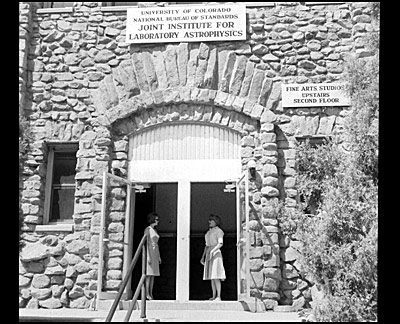Physics Portal - OverviewPhysics research at NIST includes everything from improving the safety of medical radiation procedures to developing future "quantum information" technologies that generate unbreakable codes. NIST provides the measurements, standards, and technical expertise scientists and industries need to push the limits of the fundamental properties of nature. Subject Areas
Programs and Projects
Theory of Transport in Graphene
Graphene, a single layer of carbon atoms, is one of the most likely materials to produce the next breakthrough in the electronics … more
Collagen Films Protocol
Background: Collagen type 1 is the most prevalent extracellular protein in connective tissue, and is part of the family of collagens that are … more
NIST Standard Reference Simulation Website
The Standard Reference Simulation Website is an ongoing project whose aim is to provide well-documented simulation results for a variety of … more
Detector metrology
High performance radiometers with selected optical detectors are being designed, characterized, and calibrated in the Optical Sensor Group for the … more
Color and appearance
We are developing instrumentation, standards artifacts, and measurement protocols to characterize appearance attributes including color, texture, … more
Solid-state lighting metrology
With the rise of new, energy-efficient solid-state lighting (SSL) systems has come the need for new performance metrics and measurement methods to … more Instruments
Spectrally tunable lighting facility
Solid-state lighting (SSL) is increasingly being introduced into the market and it is expected that many of the light sources currently used for … more
Continuous-wave terahertz spectrometer
The continuous-wave terahertz spectrometer makes use of two near-infrared lasers. The first laser is a fixed-frequency cw ring Ti:Sapp laser … more
Facility for spectroradiometric calibrations (FASCAL)
The FASCAL has been in continuous operations since 1970s for the calibrations of spectral radiance of sources. The measurements are performed by … more
Aperture area measurement facility
NIST has established an absolute aperture area measurement facility for circular and near-circular apertures use in radiometric instruments. The … more
Infrared reference integrating sphere (IRIS)
An integrating-sphere system has been designed and constructed for the measurement of multiple optical properties in the infrared spectral range. … more
Telescope calibration facility
The Telescope Calibration Facility (TCF) was designed to support the NIST Stars project by providing a facility to radiometricly calibrate long … more Software
SCATMECH
SCATMECH is an object-oriented C++ class library developed to distribute models for light scattering applications. Included in the library are … more
Modeled integrated scattering tool (MIST)
The MIST program has been developed to provide users with a general application to model an integrated scattering system. The program performs an … more
NIST's Integrated colony enumerator (NICE)
Enumeration of bacterial colonies on an agar plate is simple in concept, but automated colony counting is difficult due to variations in colony … more
Noncollinear phase matching in uniaxial and biaxial crystals
Although significant work has been done to characterize collinear phase matching and to present many of its applications, noncollinear phase … more
FPGA-based multicoincidence recipe and software
The Data Acquisition Platform project allows one to build their own data acquisition instruments that collect and, if necessary, statistically … more
Electron holography
An electron hologram is a fringe modulated image containing the amplitude and phase information of an electron transparent object. The HolograFREE … more |
Related Links Contact General Information: 100 Bureau Drive, Stop 1070 |




